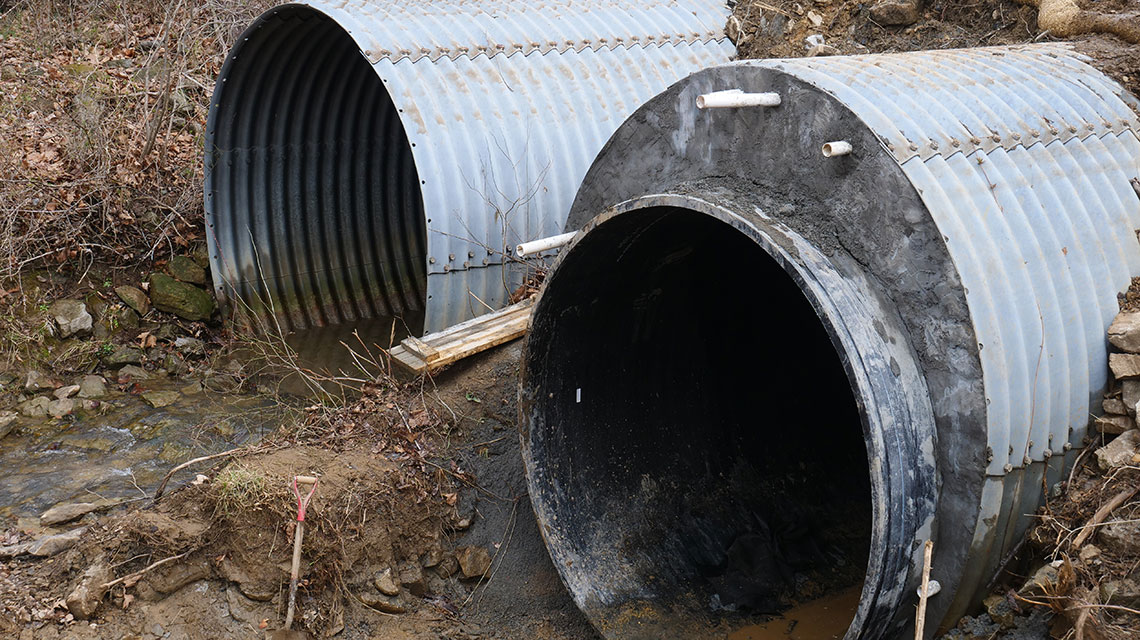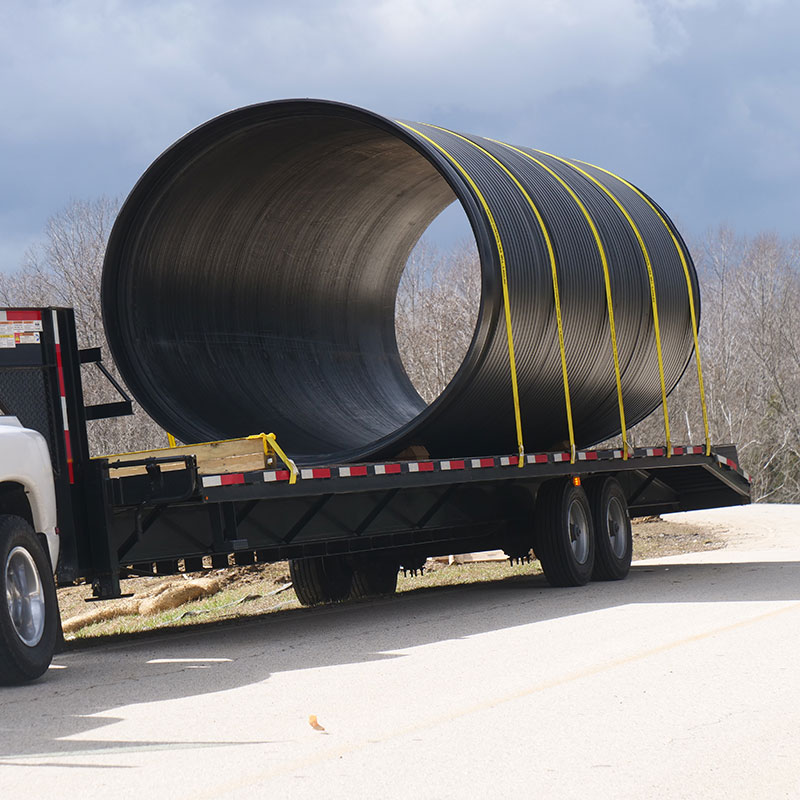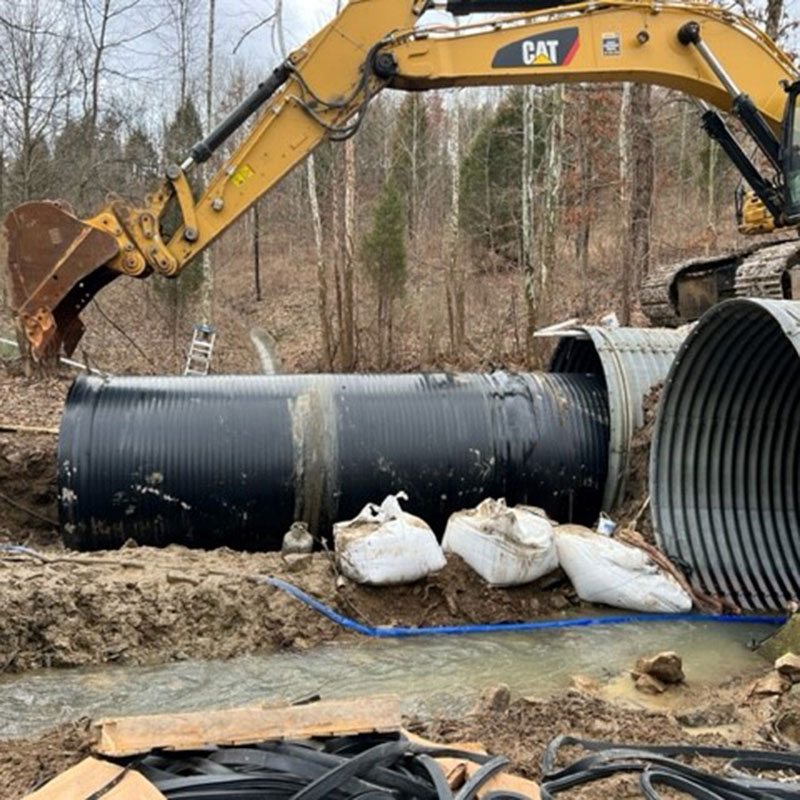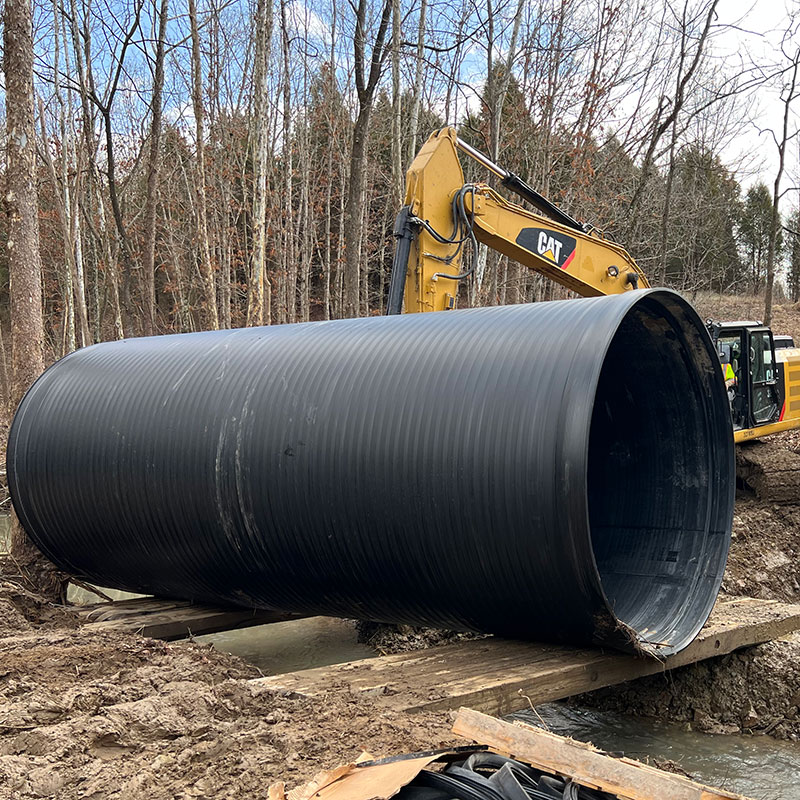
In Perry County, Tige Creek meanders through the wooded landscape of south-central Indiana and flows under State Highway 37 through a pair of 114" multi-plate corrugated metal culverts. Like so many metal culverts, the burden of fluctuating flows and time had rusted out portions of the existing structure.
The section of Highway 37 where the culverts are located is mere yards away from Interstate 64 and the on and off-ramps that connect the two thoroughfares. In addition, the culverts are 50-100 feet below the surface of Highway 37.
The proximity to I-64 and elevation all but eliminate fully replacing the culverts. The amount of roadway that would need to be closed in order to excavate the culverts would not only shut down the road in both directions for a long period of time, but would multiply the cost to the Indiana Department of Transportation (INDOT) ten-fold.

Rehab or Replace?
In turning to rehabilitation instead of replacement, the use of HDPE pipe was the most sensible option due to cost, ease of installation, and the long-term nature of the solution. When it comes to culvert rehabilitation and HDPE, the use of ISCO's Snap-Tite and Spirolite offers a leak-free, long term solution that can be installed by pushing a new HDPE pipe section inside an existing culvert, creating a new pipe within the old one—known as “slip-lining”. This process avoids the need for costly and disruptive excavation. In the case of Tige Creek, due to the size of the existing culvert, 96-inch (ID) RSC 160 Bell Spigot Spirolite was the answer.
ISCO manufactured the 18-foot lengths of Spirolite ASTM F894 Pipe at its facility in Corsicana, Texas and delivered them to the jobsite.

Spirolite - On the Jobsite
On the worksite the rehabilitation prep began by diverting the water flow in Tige Creek to one of the two culvert lines. The crew then cleared debris from the existing culvert and laid 2x4s parallel inside the existing pipe on the bottom at 5 and 7 o’clock to act as a guide to steady the Spirolite and avoid scraping against the existing bolts that protrude from the length of the multi-plate metal culvert. Additionally, 2x4s were screwed into the top of the existing host pipe at 11 and 1 o’clock and built up to prohibit the liner pipe from floating during the grouting phase. Between the 2x4s along the top were a series of grout tubes at 100’ intervals.
Once the culvert had been prepped and the Spirolite was delivered to the site, installation could ensue. The contractors, long-time partners Temple and Temple Excavating - who had been trained and certified by ISCO, began feeding, or slip-lining the pipe into the culvert from the end that water enters the line. Each pipe was joined with
the next piece using the specifically fabricated bell and spigot ASTM D3212 gasketed joints and sealing them with a heat activated wrap. While the wrap is not a necessity to ensure a complete installation, it aids in the ease of installation for the contractor.
Once the 543-foot line was installed, both ends of the headwall were sealed with a cement mixture, creating a bulkhead or end seal that is designed to contain the cellular grout that is pumped into the annular space. Short lengths of pipe were also installed through the bulkhead, allowing air to exit as the grout is pumped into the annular space.
The grout that is pumped into the open area is a blend of concrete and a foam compound that makes the mixture lighter, but does not compromise the strength of the grout. The bottom of the Spirolite is installed closer to the bottom of the existing culvert than the top to allow water to flow naturally through the smooth interior of the new HDPE line.
Once the grout in the first line was complete, the same process began with the second line from the beginning, a project that took three-to-four weeks to complete.

Low-impact, Lower Cost, Leak-Proof, and Long-Term
The culvert rehabilitation is part of the Statewide Transportation Improvement Program initiated by INDOT to improve culverts throughout the state, a project that ISCO has been actively involved in, utilizing Spirolite and Snap-Tite for a low-impact, lower cost, leak-proof, long-term, and efficient solution.
SUBSCRIBE TO ISCO UPDATES
ISCO Updates
[gravityform id="21" title="true"]
